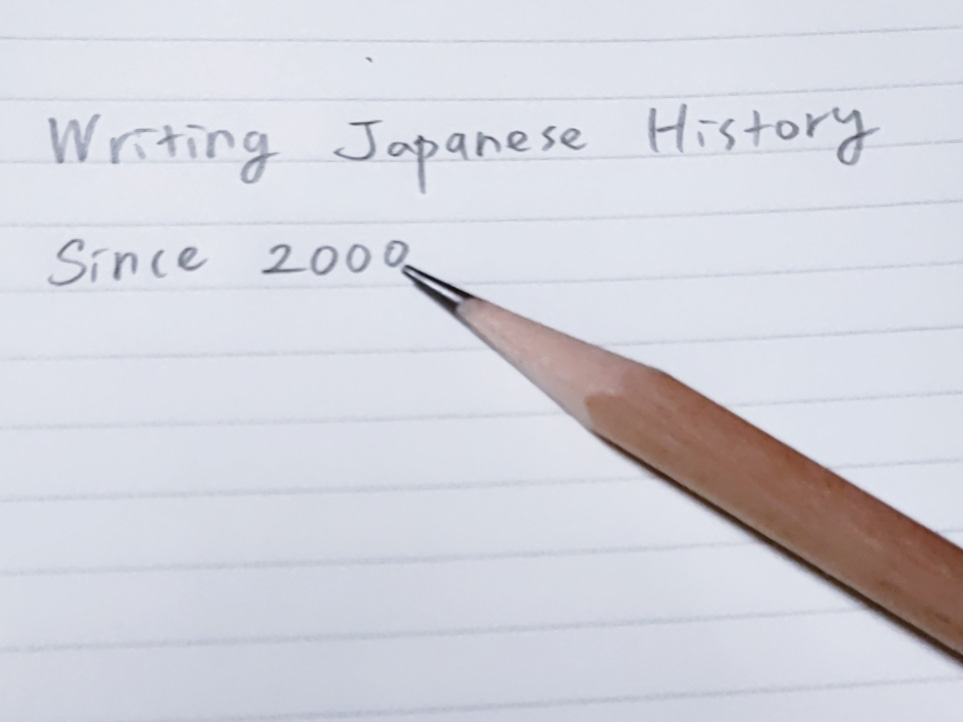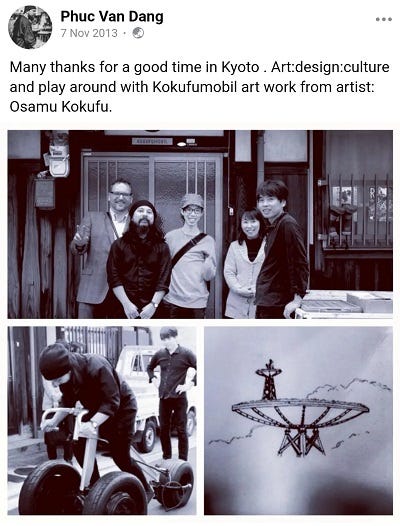Writing Japanese Art History since 2000 (2)
Chisai Fujita is researcher of contemporary Asian art. Chisai decides to write art histories about several Asian countries and regions since 2000. Today, she writes about Japan.
Hi there, I am Chisai Fujita 藤田千彩, based on Kyoto, Japan, writing worker and researcher of contemporary Asian art. Recently I have noticed that neighboring Asian countries and regions have published art history books that they wrote by themselves since 2000. However, in Japan where I am based, there are almost no books about Japanese art history after 2000. So, I decided, "well, I will write it".
This article is based on a gallery tour "Writing Japanese Art History since 2000" 1 / Looking at Osamu Kokufu's artworks (1)" and Chisai considers Japanese art history from various angles and its state after 2000.
See introduction and Writing Japanese Art History since 2000 (1)
Artwork “Tug Tricycle” for artists
I wrote the article (1) that Japanese art history after 2000 recorded exhibitions and art events rather than artists and their artworks. Unlike them, I will get a little closer to artist Osamu Kokufu and his artwork "Tug Tricycle".
What I want to focus on is the presence of classmates and friends. When considering his artworks, it may be good to combine them with his seniors and similar tastes in the National Museum of International Art. But I have to research his closer/connected people for Japanese art history.
For example, a Danish artist Phuc who is our friend has come to our house. At that time, Kokufu put him on “Tug Tricycle". Phuc was so happy and he posted a picture on his Facebook.
bottom-left, Phuc rode “Tug Tricycle"
Looking at this, it looks more friendly vehicle like bicycle than artwork in the museum. For Kokufu, what kind of concept did he think and make it, and how did he feel when his friend rode? I think he couldn't believe it would be a museum collection then.
1995 for artists
Secondly, what about Kokufu's friends from schooldays? As of 2023, there are nothing in common with artworks, but I know important artist is Kyota Takahashi.
Kyota Takahashi’s artwoks, photo by Chisai Fujita, September 9th, 2023 in Okazaki Koen Park, Kyoto, Japan
According to Takahashi (*1), Kokufu and Takahashi were classmates majoring in sculpture. They had some things in common that they were interested in automobiles and motorcycles, but they also collaborated with other classmates to make some artworks. For example, for one artwork, Kokufu was technical part and Takahashi was in charge of sound and lighting. Apparently, the relationship was so close that they almost always spent time together. However, after graduating from graduate school, the friendship between Kokufu and Takahashi broke off. Why?
In November 1994, after graduating from graduate school, Kokufu held his first solo exhibition at Art Space NIJI, Kyoto, Japan. In this exhibition, Kokufu represented his artworks using bicycles and automobiles that he had made while he was in graduate school. On the other hand, Takahashi won the prize in the Kirin Contemporary Award in 1995. This award was very cool and everyone knew he could make debut as contemporary artist in the 1990s. Neither Kokufu nor Takahashi mentioned it directly, but when Takahashi won it and became contemporary artist on a big stage earlier, Kokufu must have felt jealous. After graduating from university, they never met in private, the only time they presented same exhibition was at "Aichi Triennale" in 2013 (but they haven't even met on the opening day).
The most important thing to consider is that Kokufu made the only artwork "Tug Tricycle" in 1995 (*2). For Kokufu, how was he in 1995? What is art history in 1995, how do I write it? Is it from artists' point of view? Or artworks' view? Or exhibitions’ history?
*1 / Hearing from Kyota Takahashi on July 6, 2014 (Chisai heard and recorded it)
*2 / Exhibition Catalog “Osamu Kokufu: Cosmosphere” at the Otani Memorial Art Museum Nishinomiya City, 2013, see p53 and p107







